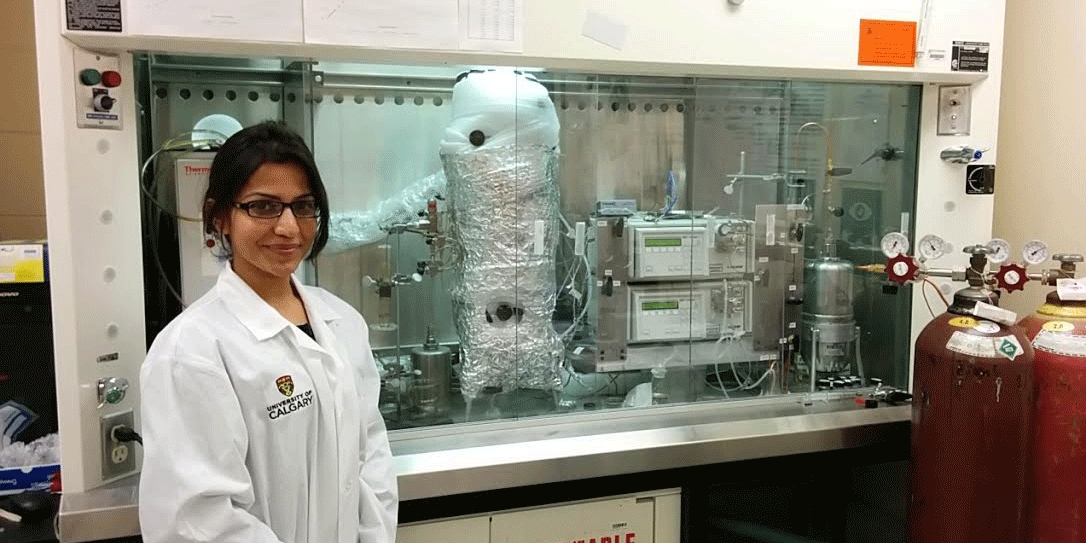
Aprami Jaggi Defends PhD
Calgary, Alberta – Aprami Jaggi has been through all three funding periods of C-IMAGE and defended her PhD dissertation in March 2018 to complete her degree. Dr. Jaggi’s research focuses on how oil components transfer to the water with different pressures, known as ‘partitioning’.
Aprami’s 2014 Student of the Month Article
Aprami’s research has incorporated major findings from the University of Calgary research group.
Dissolved organic matter in marine environments: A study of the origin, lability and molecular composition
- Marine dissolved organic matter (DOM) across the sampled regions comprises a homogenized mix of species with heteroatom distribution of NOx, N2Ox, N3Ox, and Ox. The multi-oxygenated species (O2-22) offer the highest contribution to the relative intensity of the DOM mass spectra. The surface water DOM shows the most variation in their relative intensity and abundance of multi-oxygenated species, reflecting their lability in contrast to the more homogenized deeper waters.
- Pyrogenesis or the breakdown of terrigenous and marine organic matter on exposure to the heat yields an increase in more refractory compounds. The heating of plant biomass produces homogenized spectra that closely resemble bathypelagic marine water DOM composition.
- In contrast to the oxygen rich water DOM, the sediment water extractable organics is enriched in nitrogen containing species (N1-6O1-17) with smaller carbon number and double bond equivalent values. The sedimentary organics tend to better preserve the input signatures of organics feeding into them, relative to the overlying waters.
- The extent of organics (BTEX – Benzene, Toluene, Ethylbenzene and Xylene) partitioning from the oil into the water phase increases with a decrease in pressure and increase in temperature, with pressure being the chief driver of the change.
- The addition of dispersant to the water phase, increases the extent of organics (BTEX) partitioning into the water phase. This effect is higher at lower pressure conditions.
- The in situ burning of oil causes nearly double the concentration of highly condensed and oxidized aromatics to partition into the water phase, relative to the same amount of oil in contact with water.
Dr. Jaggi’s next steps will include working towards translating our learnings and applying them to the Arctic to ensure better preparedness and understanding of the oil release in a different environment. Beyond that I also intend to apply some of the understanding of dissolved organic matter towards characterizing the produced waters from Oil sands operations in Alberta. I will be taking on these tasks by working with PRG group under Dr. Steve Larter and Dr. Thomas Oldenburg, in University of Calgary.


